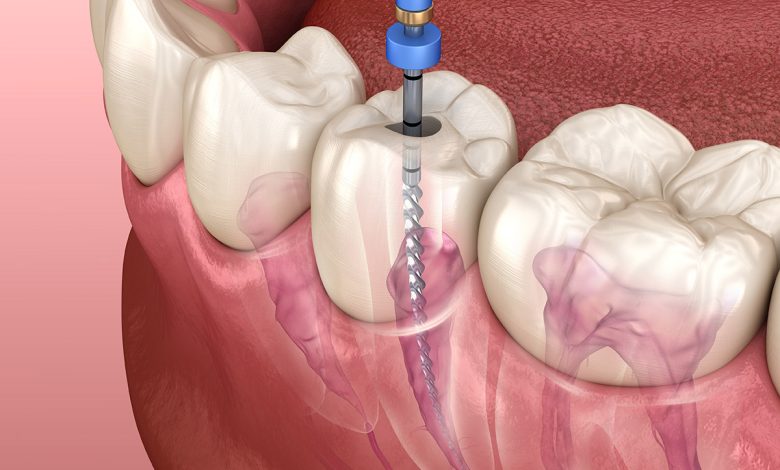Root Canal Therapy Anterior Procedure and Guide

Many people are often concerned when their dentist suggests root canal therapy. After all, most people have probably heard the old cliché, “I’d rather have a root canal.” While many people think it’s painful, root canal treatment is a pain-relieving treatment, and surprisingly, it’s more common and safer than you think.
What is root canal therapy?
Root canal therapy anterior, also called endodontic treatment, is a procedure that removes the infection from within a tooth and protects it from future damage. The roots of a tooth contain the blood cells and nerve tissue, also known as pulp. The pulp nourishes the tooth and provides moisture to the surrounding tissue. When your tooth enamel deteriorates from decay or trauma, the pulp is exposed. It is the nerves in the pulp that experience hot and cold temperatures as pain.
Signs that you may need root canal treatment include:
Swollen or red gums
a broken tooth
Extreme sensitivity to heat and cold.
A dark or discolored tooth
pain when chewing
Injury or trauma to the mouth.
Root Canal Benefits
There are several reasons why dentists recommend root canal treatment. Root canal treatment helps you preserve your natural tooth, eat the foods you love and minimize the need for ongoing dental treatment.
With proper care, root canal teeth can last a lifetime. Other benefits of root canal treatment include:
Virtually Painless Procedure – Root canal treatment is nearly painless and gives you less discomfort during recovery than when a tooth is extracted. Dentists use modern technologies and anesthesia to make sure you feel as comfortable as possible during the procedure. Efficient and Cost-Effective: Root canal therapy anterior is fast and cost-effective. You can avoid the need for an extraction and follow-up appointments for an implant, dentures, or bridge. Visually pleasing result: A custom prosthetic crown is used to complete the root canal treatment and restore function and aesthetics. Leaving the tooth in place also prevents the adjacent teeth from shifting.
Treatment overview
Root canal therapy anterior is performed in three simple steps and usually takes one to three sessions. The first appointment includes a full exam with X-rays and a consultation to give you all the information you need to be sure of the procedure. At the second appointment, these steps are performed:
Cleaning:
After administering a local anesthetic, the dentist makes a small access hole in the top of the tooth and removes the dead and diseased pulp tissue.
Filling:
The dentist then cleans, shapes, and disinfects the canals using special tools and irrigation solutions. The dentist then fills the canals with an antibacterial material and seals the tooth.
Add a crown or filling – The top of the tooth is protected with a custom crown designed to blend naturally with the surrounding teeth. Once the crown is in place, you will no longer feel any pain when biting or chewing.
Root canal treatment usually only takes one appointment. However, if you have an extensive infection, curved ducts, or very long ducts, you may need additional appointments. In most cases, your third and final appointment will be the placement of the crown. After root canal treatment, the tooth will continue to receive nutrients from the ligaments that anchor the tooth to the bone.
Aftercare
As with all dental procedures, aftercare is essential to prevent further infection. To avoid complications, always follow your dentist’s instructions. If you are prescribed an antibiotic, make sure you take it as instructed.
To support your recovery, your dentist may recommend the following:
Eat soft foods for the first 24 hours after the procedure.
Use pain medication if necessary, although the pain usually disappears after 24 hours.
Avoid chewing ice or using your teeth as tools
Brush your teeth before going to bed and at least once a day
Use fluoride toothpaste
Use a soft-bristled toothbrush and replace it regularly.
Schedule biannual dental checkups and cleanings
Floss regularly to clean between teeth and prevent plaque build-up
Avoid sugary foods and drinks and eat healthily
Drink plenty of water every day
Wear a mouthguard when participating in sports activities.
Short version Procedure:
This endodontic procedure removes the infection from the inside of your tooth, disinfects the inside, fills and seals the pulp chamber, and maintains a healthy tooth structure with a dental crown.
An icon of a tooth that reads “Root canal therapy anterior has a 95% success rate!”
Large version Procedure:
1. Your dentist will numb the entire area around your tooth.
If you have trouble falling asleep or suffer from dental anxiety, we offer sedation dentistry to keep you comfortable.
2. We make a small opening in your tooth to access the pulp chamber.
3. We will carefully remove the infection and the pulp.
4. We thoroughly disinfect and rinse the inside of your tooth.
If necessary, we can put medicine in your tooth to clear the infection and have you come back for another appointment to complete the treatment.
5. Your root canal is filled and sealed with a high-quality resin to prevent reinfection and strengthen your tooth structure.
Finally, a dental crown may be recommended to protect your tooth from breakage and to restore its function. If this is the case, you may need an additional appointment to have the crown made and placed.
